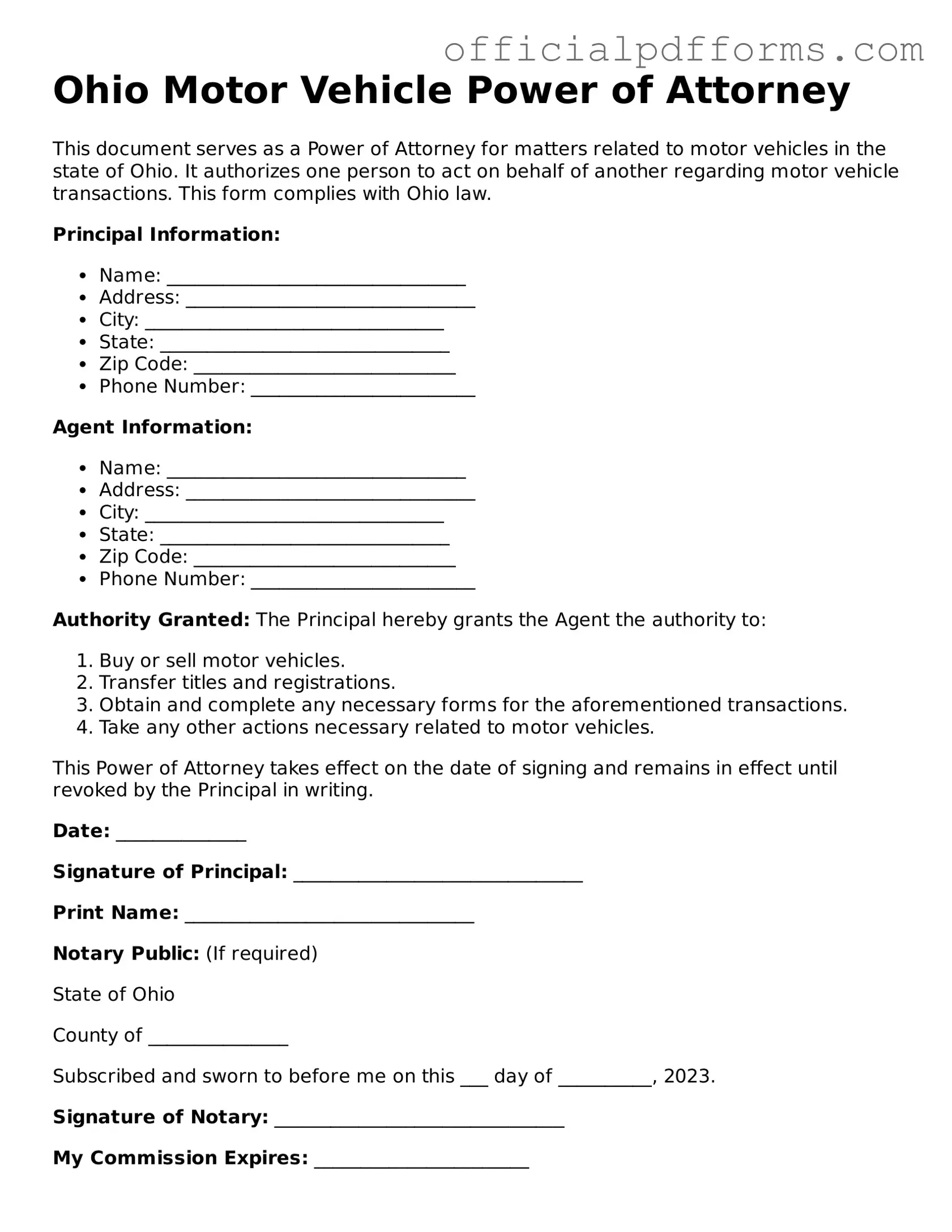The Ohio Motor Vehicle Power of Attorney form is a legal document that allows one person to designate another individual to act on their behalf regarding motor vehicle transactions. This can include buying, selling, or transferring ownership of a vehicle, as well as handling registration and title issues.
Any competent adult can be designated as an agent in the Ohio Motor Vehicle Power of Attorney form. This can include family members, friends, or professionals, such as attorneys or car dealers. The key requirement is that the agent must be able to legally act on behalf of the person granting the power of attorney.
The primary purposes of the Ohio Motor Vehicle Power of Attorney form include:
-
Facilitating the sale or transfer of a motor vehicle.
-
Allowing an agent to register a vehicle on behalf of the owner.
-
Enabling the agent to obtain a duplicate title or registration.
-
Handling any other necessary transactions related to the vehicle.
To complete the Ohio Motor Vehicle Power of Attorney form, follow these steps:
-
Provide the full name and address of both the principal (the person granting authority) and the agent (the person receiving authority).
-
Clearly specify the powers being granted to the agent.
-
Sign and date the form in the presence of a notary public.
Yes, the Ohio Motor Vehicle Power of Attorney form must be notarized to be considered valid. The presence of a notary public ensures that the signatures are authentic and that the parties involved understand the document's implications.
How long is the Power of Attorney valid?
The validity of the Ohio Motor Vehicle Power of Attorney form typically lasts until the specific transaction is completed or until the principal revokes it in writing. It is advisable to specify a termination date if the power of attorney is intended to be temporary.
Can the Power of Attorney be revoked?
Yes, the principal can revoke the Power of Attorney at any time, as long as they are competent to do so. To revoke the document, the principal should provide written notice to the agent and any relevant parties, such as the Ohio Bureau of Motor Vehicles.
Once the Ohio Motor Vehicle Power of Attorney form is completed and notarized, it should be kept in a safe place. The principal should provide a copy to the agent and any entities that may require it, such as the Ohio Bureau of Motor Vehicles, when conducting transactions.
There is no specific fee for completing the Ohio Motor Vehicle Power of Attorney form itself. However, fees may apply for notary services or for any transactions conducted as a result of the power of attorney, such as title transfers or registration fees.
